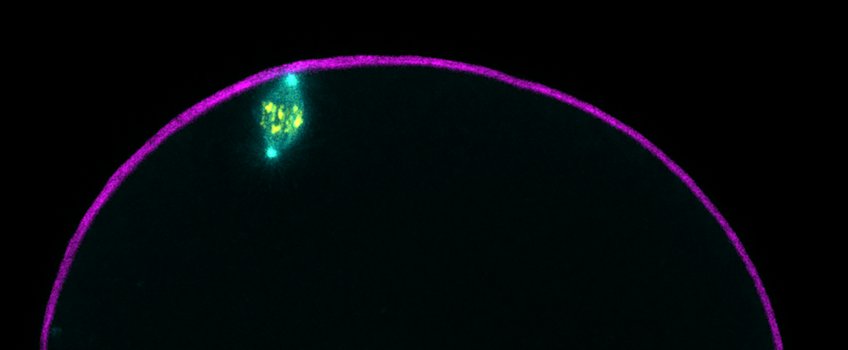
Cytoskeletal Dynamics in Oocytes
Oocyte meiosis is a form of cell division specialized to produce the fertilizable egg. Our main interest is understanding how the cell division machinery, the cytoskeleton in particular, adapted to carry out these specialized divisions.
For example, oocytes are exceptionally large cells storing nutrients for the embryo that divide very asymmetrically in order to retain these nutrients in a single egg cell. How does the cytoskeleton support divisions in this extreme geometry? Indeed, we showed that, compared to mitosis of small somatic cells, additional, meiosis-specific mechanisms are required. Interestingly, we found that while in somatic cells microtubules dominate, in the oocyte key functions are taken over by the actin cytoskeleton; for example, an actin net transports chromosomes to the forming spindle and as we showed recently actin is also involved in regulating spindle assembly.
To explore the conservation and diversity of these meiosis-specific functions, we are using marine model species such as the oocytes of starfish. These oocytes are highly transparent, exceptionally resistant to light and easy to handle, rendering them an excellent model for live cell microscopy. In our future work we aim to further establish these marine models by developing advanced imaging assays and tools for targeted molecular perturbations. In turn we will use these tools to further dissect mechanisms of meiotic divisions.
Studying oocyte meiosis is important, as a euploid egg is at the origin of life of any healthy animal and human individual, while the mechanisms are still poorly understood. In addition, understanding how cell division adapted and diversified to such specialized functions will reveal general principles of cellular organization.




